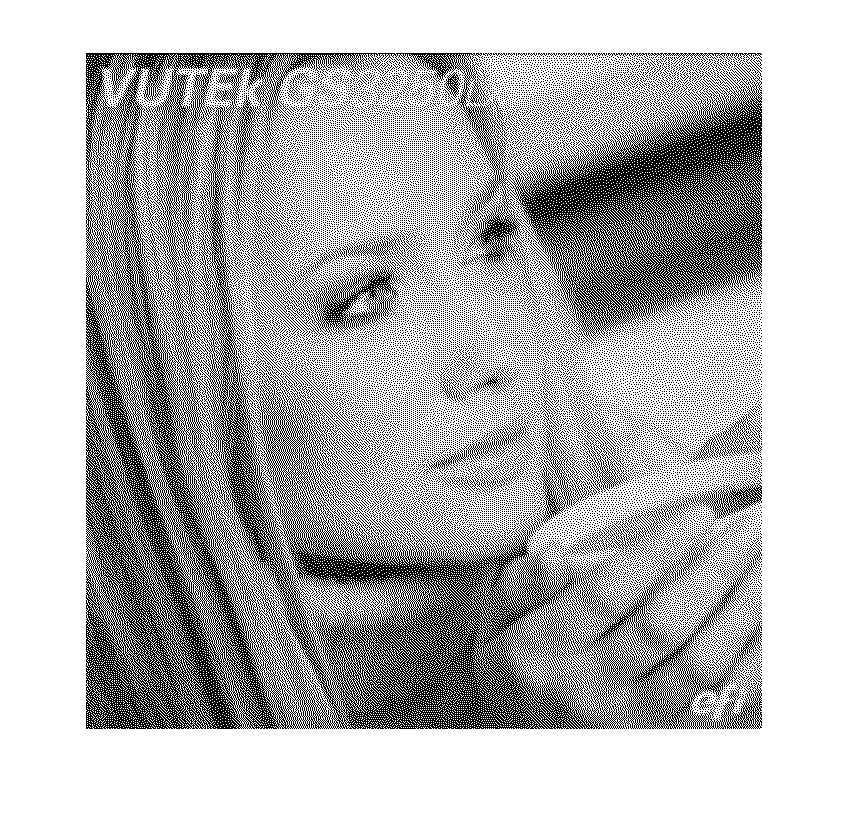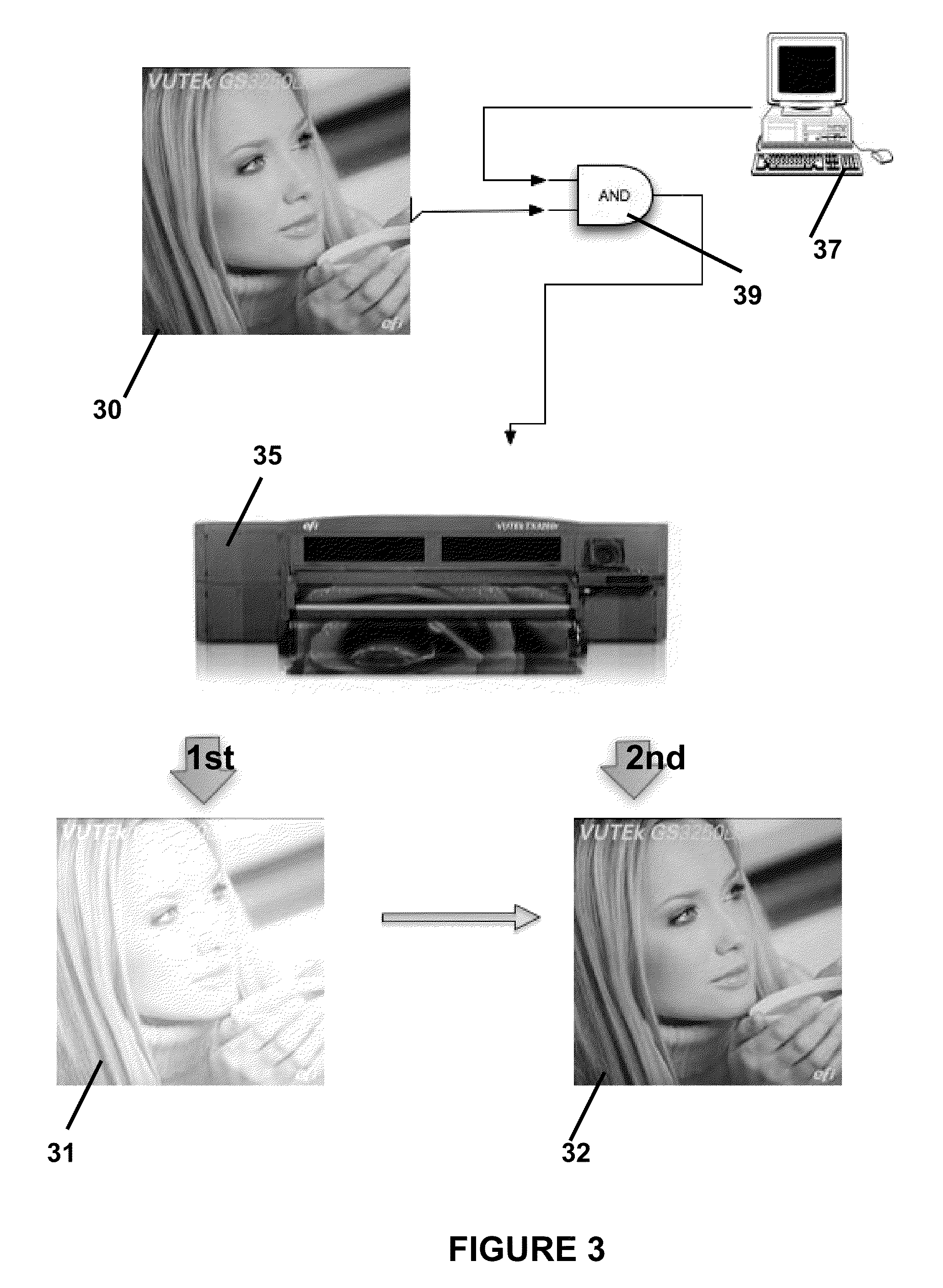Multi-layer printing on non-white backgrounds
a multi-layer printing and non-white background technology, applied in the field of printing, can solve the problems of increasing ink density and increasing white ink density, and is not a satisfactory approach to compensating for non-white mediums, and achieves the effects of avoiding undesirable side effects, such as gloss banding, and reducing ink density
- Summary
- Abstract
- Description
- Claims
- Application Information
AI Technical Summary
Benefits of technology
Problems solved by technology
Method used
Image
Examples
Embodiment Construction
[0014]An embodiment of the invention modifies the base white layer applied to non-white or colored media by printing and curing the white layer with a portion of the colored ink of the image to be printed. By altering the white layer to reflect the density and / or saturation of the image itself, it is easier to reach saturation (density / gamut) without adding large amounts of ink to compensate for the cast of the underlying media. Thus, image quality is increased, while undesirable side effects, such as gloss-banding, are avoided.
[0015]FIG. 1 shows an original image that is to be printed. In an embodiment, a lightness (L) percentage (1-100%) of the image to be printed is added directly into the white layer while it is being printed (wet). Thus, the white ink and a portion of the colored ink that makes up the actual image merge and are cured together. See FIG. 2. While the image itself is not substantially visible in the white layer after the white layer is printed, images printed in t...
PUM
 Login to View More
Login to View More Abstract
Description
Claims
Application Information
 Login to View More
Login to View More - R&D
- Intellectual Property
- Life Sciences
- Materials
- Tech Scout
- Unparalleled Data Quality
- Higher Quality Content
- 60% Fewer Hallucinations
Browse by: Latest US Patents, China's latest patents, Technical Efficacy Thesaurus, Application Domain, Technology Topic, Popular Technical Reports.
© 2025 PatSnap. All rights reserved.Legal|Privacy policy|Modern Slavery Act Transparency Statement|Sitemap|About US| Contact US: help@patsnap.com



